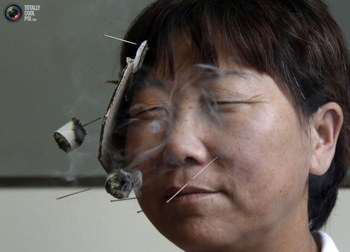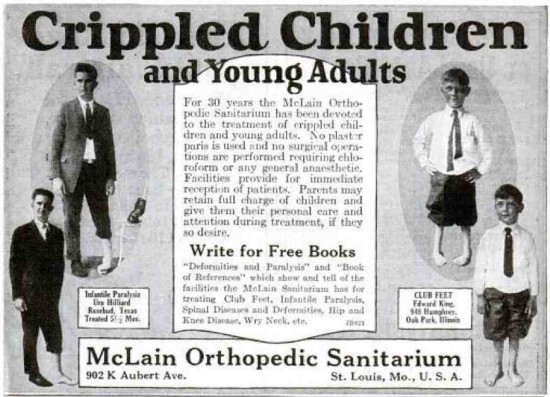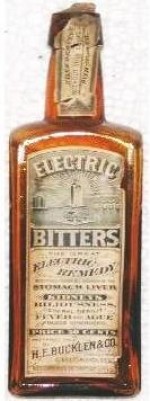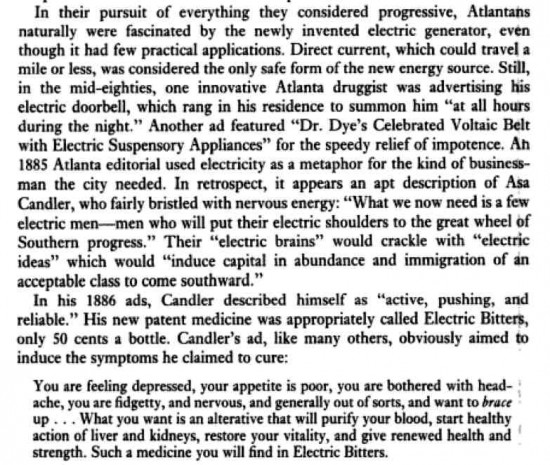Medicine
Cold Wind Causing Facial Paralysis
A search on Google Scholar reveals that common causes of facial paralysis include Herpes simplex virus, lyme disease, Bell's palsy, and Ramsay Hunt syndrome. But in Shanghai, doctors are reporting numerous cases of facial paralysis caused by the cold autumn wind. Fatigue is also a contributing factor. A Shanghai doctor cautions that, "Elderly people, new mothers, children with weak immunity, and those exposed to cold wind after drinking are the most likely to suffer facial paralysis."It's also reported that the "majority of the patients are male between 20 and 50 years of age." (I'm guessing they're the ones being exposed to the cold wind after drinking.) They're coming into hospitals complaining of sudden paralysis on one side of the face. A little bit of acupuncture and massage, and they're set right. [hillpost.in]

Posted By: Alex - Thu Oct 18, 2012 -
Comments (8)
Category: Health, Medicine, Weather
Black Draught

Surely this is the worst name for a laxative ever, conjuring up images of torrents of tarry bowel movements. The fact that "black draught" is also a term for a horse and cow purgative doesn't help.
Worst of all, the stuff is still being sold!
Listen to these old grannies wince at the memory of taking Black Draught in their youth.
Posted By: Paul - Fri Oct 12, 2012 -
Comments (8)
Category: Medicine, Excrement, Nineteenth Century
Yeast, Its Not Just For Bread Anymore
Everyone has heard of medicinal patches, stick it on and the medicine is absorbed through the skin. They are used for pain meds, heart meds, even nicotine to stop smoking. Not all medicines can be absorbed through the skin easily though. Piercing the skin to allow absorption is necessary. But what would power the micro needles needed to administer these other meds? How about yeast? Activate the yeast chamber and it produces carbon dioxide that forces the micro needles into the skin. A very clever idea, if it works they will make a lot of dough from yeast this way.
Posted By: Alex - Mon Sep 17, 2012 -
Comments (3)
Category: Medicine
The Pipes of Pain
Would you go to a dentist called Dr. Pain? Would your decision change if you knew he was going to play bagpipes for you as he waited for your anesthesia to take effect?Unfortunately, the question is moot, since Dr. Rodney Pain, the bagpipe-playing dentist of San Francisco, is surely no longer in practice. (He's probably no longer alive.) A photo and caption detailing his unusual blend of dentistry and Scottish music ran in newspapers back in early 1966. [Saskatoon Star-Phoenix, Spokane Daily Chronicle]

More in extended >>
Posted By: Alex - Mon Sep 10, 2012 -
Comments (14)
Category: Medicine, Music, 1960s
Shepherd of the Royal Anus
Strange job title. 'Shepherd of the Royal Anus' (neru pehut) was a title held by several court physicians in Ancient Egypt, including Ir-en-akhty (who lived during the First Intermediate Period) and his predecessor Khuy. It could also be translated as 'Herdsman of the Anus' or 'Guardian of the Anus'. Here's a partial explanation:And more:
Posted By: Alex - Sat Sep 01, 2012 -
Comments (6)
Category: Medicine, Odd Names, Ancient Times
Self-Gassing Device

Kind of like having an octopus attached to your head. From Popular Science, May 1938.
Posted By: Alex - Sun Aug 19, 2012 -
Comments (6)
Category: Inventions, Medicine
Crippled Children

[Click to enlarge]
Sometime we forgot how much civilization has advanced in 90 years. What was common becomes weird.
Of course, at my age I still recall childhood polio as a danger.
Original ad here.
Posted By: Paul - Mon Aug 13, 2012 -
Comments (3)
Category: Body, Feet, Medicine, Advertising, Children, 1920s
Don’t tell me my kid is fat!
A study recently published in the journal Pediatric Obesity has found that when parents go to the doctor, they don't like the doctor to tell them that their little angel is "fat, chubby, overweight or obese." Instead, they prefer it if doctors use non-medical euphemisms such as, "Your kid is large," or "Your kid is gaining too much weight." And the problem is that if the parents feel offended, they often stop listening to the doctor altogether, which results in their large child growing even larger. Link: eurekalert
Posted By: Alex - Wed Aug 01, 2012 -
Comments (13)
Category: Medicine, Children, Parents, Eating
Image of Corneal Transplant
The Encyclopedia of Surgery explains:the eye is held open with a speculum. A laser is used to make an initial cut in the existing cornea. The surgeon uses scissors to remove it, and a donor cornea is placed. It is stitched with very fine sutures.
Image via reddit.

Posted By: Alex - Tue Jul 31, 2012 -
Comments (10)
Category: Medicine, Surgery
Electric Bitters



I can't find the ingredients for this patent medicine, but I'll bet it packed a kick.
Here's the story of its creation, as given also below.

Posted By: Paul - Mon Jul 23, 2012 -
Comments (11)
Category: Business, Advertising, Products, Medicine, 1900s, 1910s, Alcohol

| Who We Are |
|---|
| Alex Boese Alex is the creator and curator of the Museum of Hoaxes. He's also the author of various weird, non-fiction, science-themed books such as Elephants on Acid and Psychedelic Apes. Paul Di Filippo Paul has been paid to put weird ideas into fictional form for over thirty years, in his career as a noted science fiction writer. He has recently begun blogging on many curious topics with three fellow writers at The Inferior 4+1. Contact Us |




